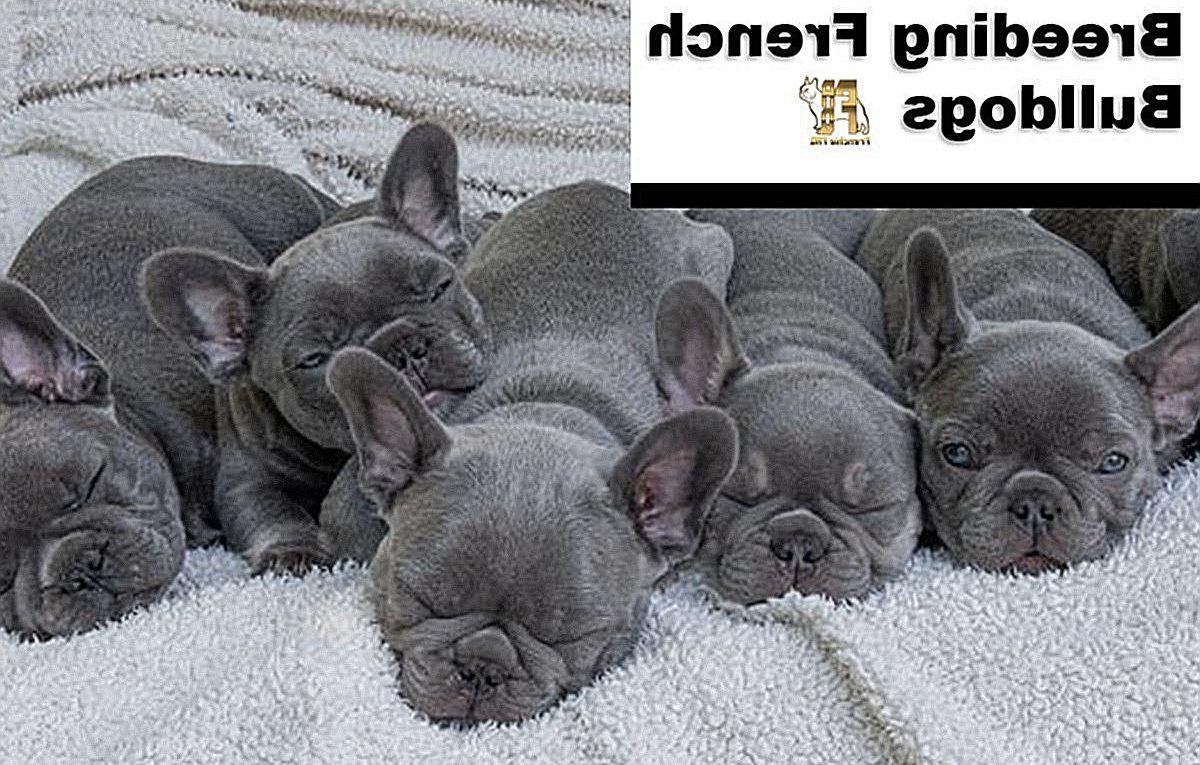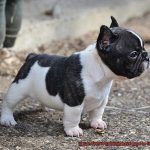Can French bulldogs go out in the snow?
Winter is in full swing, and as fluffy snowflakes fall gracefully from the sky, we can’t help but wonder if our furry friends can have a blast in the frosty wonderland. Picture this: your adorable Frenchie frolicking fearlessly through the snowy landscape, their paws leaving tiny paw prints behind. But before we embark on our snowy escapades, let’s make sure our Frenchies are safe and sound.
In this blog post, we’ll explore the exciting question: can French bulldogs go out in the snow? Get ready to uncover fascinating insights into their breed traits and how they handle chilly weather.
So grab a warm beverage, snuggle up with your Frenchie, and let’s dive into this snowy adventure together.
Understanding French Bulldogs’ Brachycephalic Nature
Contents
- 1 Understanding French Bulldogs’ Brachycephalic Nature
- 2 Assessing Temperature and Duration of Exposure
- 3 Providing Proper Protection for French Bulldogs in the Snow
- 4 Monitoring Signs of Discomfort or Distress in Cold Weather
- 5 Avoiding Chemically Treated Snow and Cleaning Paws Afterward
- 6 French Bulldogs Are Not Built for Outdoor Living
- 7 Prioritizing Comfort and Safety When Taking French Bulldogs Out in the Snow
- 8 Tips to Keep Your French Bulldog Safe and Warm in Cold Weather
- 9 Conclusion
Are you excited about the winter season and the possibility of playing in the snow with your furry friend? Well, before you bundle up and head out, let’s take a moment to understand how your French Bulldog’s brachycephalic nature can affect their snow adventures.
The Brachycephalic Challenge:
French Bulldogs have adorable flat faces that make them unique, but this also means they have shorter airways. These shortened airways can make it more challenging for them to regulate their body temperature in extreme weather conditions like the cold snow.
Breathing Difficulties:
When your French Bulldog breathes in cold air, their airways can constrict, leading to discomfort and breathing difficulties. This is why it’s essential to closely monitor their behavior while they’re outside in the snow.
Overheating Concerns:
As we know, French Bulldogs tend to overheat easily due to their shorter snouts. In moderate temperatures, they may already struggle to cool down efficiently. In the snow, this can become even more challenging, as they may find it difficult to pant effectively and regulate their body temperature.
Snow Play with Caution:
While some French Bulldogs may enjoy frolicking in the snow for short periods, it’s crucial to keep an eye on their well-being. If you notice excessive panting, shivering, reluctance to move, or seeking shelter, these may be signs that your furry friend is uncomfortable and needs to head back indoors.
Dress for Success:
To protect your French Bulldog from the cold and prevent further respiratory issues, consider dressing them in a warm and waterproof coat or sweater before venturing out into the snowy wonderland. This will help keep them cozy and dry.
Paw Protection:
Remember that snow treated with chemicals or salt can be harmful to your French Bulldog if ingested or in contact with their paws. Avoid areas where snow has been treated, or ensure you thoroughly clean your dog’s paws after outdoor play.
Assessing Temperature and Duration of Exposure
French bulldogs, with their adorable squished faces and compact bodies, are an incredibly popular breed. However, their brachycephalic nature means they have a higher sensitivity to extreme temperatures. This makes it essential for owners to assess the temperature and duration of exposure when taking their French bulldogs out in the snow. In this section, we will provide you with valuable insights and tips based on first-hand knowledge and research.
Understanding Your French Bulldog’s Tolerance:
French bulldogs have varying tolerances to different temperatures. While they may enjoy frolicking in the snow, it’s important to remember that every dog is different, and individual tolerance levels may vary. Some Frenchies may be more sensitive to the cold and show discomfort earlier than others. So, always keep a close eye on your furry friend’s behavior.
Assessing the Temperature:
The ideal temperature for French bulldogs to be outside in the snow is around 32°F (0°C). At this temperature, they can comfortably enjoy their time outdoors without risking any adverse health effects. However, it’s crucial to monitor your dog closely for any signs of discomfort or distress.
Signs of Discomfort or Distress:
To assess whether your French bulldog can handle being outside in the snow, observe their behavior. Look out for these signs of discomfort or distress:
Shivering
Whining
Lifting paws off the ground
Attempting to seek warmth by burrowing into your clothing or nearby objects
If you notice any of these signs, it’s advisable to bring them indoors immediately.
Duration of Exposure:
Even if the temperature is within the safe range for your French bulldog, extended periods outside in the snow can still pose risks. As a general guideline, it’s recommended not to keep your French bulldog out in the snow for more than 30 minutes at a time. Frequent breaks indoors should be provided to allow them to warm up and rest.
Precautions to Take:
To help protect your French bulldog from the cold weather, consider taking these precautions:
Dress them in a well-fitted dog sweater or coat to provide an extra layer of insulation.
Use dog boots or paw wax to shield their paws from the cold and potential hazards like salt or de-icing chemicals.
Providing Proper Protection for French Bulldogs in the Snow
Winter is here, and while some pups may be frolicking in the snow, our beloved French bulldogs need a little extra TLC. With their short coats and sensitive nature, it’s crucial to provide proper protection when taking them out in the winter wonderland. Fear not, fellow Frenchie enthusiasts. In this guide, we’ll explore some paw-some tips to keep your furry friend safe and warm in the snow.
Bundle Up with Dog Clothing:
Just like humans, Frenchies can benefit from some fashionable winter wear. Choose a dog coat or sweater made of waterproof material to shield them from the chilly elements. This not only keeps them cozy but also prevents them from getting wet and risking hypothermia.
Paw Protection with Boots:
Your Frenchie’s paws deserve some love too. Invest in dog boots that fit snugly, keeping their paws warm and protected from ice, salt, and other harsh substances. These boots also provide much-needed traction on slippery surfaces, ensuring your pup stays steady on their paws.
Watch for Signs of Discomfort:
While your Frenchie may adore playing in the snow, it’s vital to keep an eye on their body language. Shivering or signs of distress could indicate they are too cold. Limit their time outdoors or consider investing in a dog-friendly heated jacket or blanket to keep them toasty during longer adventures.
Choose Safe Walking Routes:
French bulldogs may be low to the ground, but that doesn’t mean they can’t enjoy a winter stroll. Opt for plowed paths or shovel a clear area for your Frenchie to walk on. Avoid deep snow or icy conditions as these can pose challenges for their adorable stocky build.
Know Your Frenchie’s Limits:
Every Frenchie is unique, so it’s essential to pay attention to their behavior in the snow. Some may be more tolerant of the cold, while others prefer cuddling up indoors. Adjust their outdoor time accordingly and find alternative ways to provide exercise and mental stimulation if needed.
Monitoring Signs of Discomfort or Distress in Cold Weather
As the temperature drops and snowflakes start to fall, it’s important to pay extra attention to our French bulldogs’ well-being. These adorable little snow fairies may look tough, but they are susceptible to discomfort and distress in cold weather. In this article, we will explore how to recognize the signs of discomfort or distress in French bulldogs during the winter season. By being vigilant and proactive, you can ensure your furry friend stays safe and snug in the frosty weather.
Shivering:
Just like us, dogs shiver when they’re cold. Keep an eye out for trembling or uncontrollable shaking in your French bulldog. This is a clear sign that they’re feeling chilly and uncomfortable. Provide them with a warm blanket or a stylish dog jacket to keep them cozy.
Excessive Paw Licking or Biting:
Snow and ice can irritate your dog’s delicate paws, leading to constant paw licking or biting. This behavior can result in cracked or injured paw pads, so it’s essential to monitor their paws regularly. Consider using dog booties or applying paw balm to protect their paws from the cold.
Changes in Posture or Movement:
If you notice your French bulldog limping, favoring a specific leg, or showing reluctance to walk, it could indicate that their paws have become too cold or even frostbitten. Promptly get them out of the cold and seek veterinary assistance if needed.
Body Language Cues:

Pay attention to your dog’s body language; it can speak volumes about their comfort level. Watch for signs such as hunching their back, tucking their tail between their legs, or seeking shelter under objects like trees or bushes. These behaviors indicate that they’re trying to protect themselves from the cold and should not be ignored.
Abnormal Breathing Patterns:
Rapid breathing or excessive panting can be signs of stress or overheating, especially if your French bulldog is exerting themselves in the snow. If you notice these signs, bring them to a warmer area and allow them to rest and recover.
Conclusion:
By monitoring these signs of discomfort or distress in French bulldogs during cold weather, you can ensure their well-being and keep them happy throughout the winter season. Remember to provide them with adequate protection, such as warm clothing and protective boots, and always prioritize their safety and comfort. With your love and care, your little snow fairy will thrive in the winter wonderland. Stay warm and enjoy the season together.
Avoiding Chemically Treated Snow and Cleaning Paws Afterward
Winter may be a magical time, but for our French bulldogs, it can also be a frosty challenge. As a responsible French bulldog owner, it’s important to take precautions to ensure their safety and well-being when venturing out into the snowy wonderland.
One of the main concerns during winter walks is the presence of chemically treated snow. Many cities and towns use chemicals like salt or de-icers to melt the snow and prevent it from freezing on roads and sidewalks. These chemicals can be harmful to dogs if ingested or if they come into contact with their paws.
To keep your French bulldog safe from chemically treated snow, here are some tips:
- Choose walking routes wisely: Opt for less frequently treated areas or places with less foot traffic. This could include quieter streets or parks that are not frequently cleaned by municipal services. Explore different routes to find the best options for your dog’s safety.
- Use dog boots or paw protectors: These handy accessories are designed to provide traction, insulation, and protection from chemicals. Make sure to choose boots that fit properly and are comfortable for your French bulldog.
- Thoroughly clean their paws: After your French bulldog has been outside in the snow, it’s essential to clean their paws thoroughly. Use a damp cloth or pet-friendly wipes to gently clean their paws, paying attention to the spaces between their toes.
- Check for signs of irritation or injury: Snow can hide sharp objects or cause discomfort if it gets stuck between your dog’s toes. Take a moment to inspect their paws for any redness, swelling, or limping. If you notice any concerning signs, consult your veterinarian for further evaluation.
- Dry their paws thoroughly: Wet paws can lead to discomfort and increase the risk of infection. Use a clean towel to gently dry your French bulldog’s paws, making sure to remove any moisture between their toes.
- Prevent excessive licking: If your French bulldog has a tendency to lick their paws excessively, it may be necessary to use an Elizabethan collar or other deterrents. Excessive licking can lead to gastrointestinal upset and other health issues.
French Bulldogs Are Not Built for Outdoor Living
Their unique physical structure and vulnerability to respiratory difficulties make them especially susceptible to the cold. In this section, we will delve into why French Bulldogs are not suited for extreme weather conditions like snow, and provide tips on how to keep them safe and comfortable during winter.
Unique Physical Structure:
French Bulldogs have a shortened skull and flat faces, known as brachycephalic features. These characteristics can lead to respiratory difficulties, particularly in cold weather. The cold air can cause their airways to constrict, making it harder for them to breathe properly.
Limited Insulation:
French Bulldogs have thin coats and minimal body fat, which means they have less insulation against the cold. Unlike breeds with thicker coats designed for colder climates, French Bulldogs are more prone to hypothermia and frostbite.
Individual Differences:
Although every dog is unique, as a general rule, French Bulldogs are not built for outdoor living in harsh weather conditions like snow. Some may handle the cold better than others, but it’s crucial to prioritize their safety and well-being by limiting their exposure to the cold.
Tips for Keeping Your French Bulldog Safe:
- Limit outdoor exposure: Short walks or bathroom breaks outside should be supervised and kept brief.
- Additional protection: Consider providing your French Bulldog with a dog sweater or jacket to keep them warm and reduce the risk of hypothermia.
- Paw care: Salt and chemical deicers used on sidewalks and roads can be harmful to your French Bulldog’s paws. Wipe their paws clean after being outside or consider using dog booties for added protection.
- Indoor play: Create an indoor play area with fake snow or engage in supervised indoor activities that mimic snowy conditions to ensure your French Bulldog can experience the snow safely.
Prioritizing Comfort and Safety When Taking French Bulldogs Out in the Snow
Winter can be a magical time, especially when snow covers the ground. But when it comes to taking your French Bulldog out in the snow, their comfort and safety should be your top priority. French Bulldogs have a unique body structure and a thin coat that makes them more susceptible to cold temperatures. In this guide, we’ll explore the importance of prioritizing comfort and safety for your furry friend during snowy adventures.
Limit Outdoor Time:
French Bulldogs are not built for extreme temperatures, including snow and freezing conditions. It’s crucial to limit their time outdoors to prevent hypothermia. Keep their outdoor excursions short and provide frequent breaks indoors to warm up. Remember, shorter walks with plenty of indoor playtime can still keep them active and happy.
Dress for Success:
Investing in a good-quality dog sweater or coat is essential to keep your French Bulldog warm during winter outings. Look for materials that provide insulation while allowing them to move freely. Don’t forget to measure their chest and neck to ensure a proper fit.
Protect Those Paws:
Snow and ice can be harsh on your French Bulldog’s sensitive paw pads. Dog booties or paw wax can provide an additional layer of protection against frostbite and irritation. Before heading out, check their paws for any ice or snow buildup, and wipe them clean after walks to avoid ingestion of salt or chemical deicers.
Stay Hydrated:
While your French Bulldog may not feel as thirsty during colder months, it’s important to offer water regularly to prevent dehydration. Dry air and indoor heating can cause moisture loss, so keep their water bowl filled with fresh water throughout the day.
Watch for Discomfort:
Pay close attention to your French Bulldog’s behavior while in the snow. Excessive shivering or signs of lethargy may indicate that they are getting too cold. If this happens, it’s time to head indoors and warm them up with cozy blankets and snuggles.
Tips to Keep Your French Bulldog Safe and Warm in Cold Weather
As winter approaches, it’s important to take extra care of our furry friends, especially French Bulldogs. These adorable dogs are not well-suited for cold weather due to their short coats and flat faces. However, with a few simple precautions, you can ensure that your French Bulldog stays safe and warm during the chilly months. Here are some tips to keep in mind:
Dress them up:
Just like humans, dogs need extra layers to stay warm in the cold. Invest in a warm and waterproof coat or sweater specifically designed for French Bulldogs. This will help insulate their body heat and protect them from the cold weather.
Protect their paws:
Snow and ice can be harsh on your Frenchie’s delicate paws. Use dog booties or apply paw wax to provide insulation and prevent injuries from icy surfaces or harmful chemicals like de-icing salts.
Limit outdoor time:
While French Bulldogs may enjoy frolicking in the snow, it’s best to keep their outdoor time short. Their short coats and brachycephalic features make them more susceptible to hypothermia and frostbite. Monitor their behavior closely and bring them indoors if they start shivering excessively or showing signs of distress.
Provide a warm shelter:
When your Frenchie comes inside after being outside in the cold, make sure they have a cozy spot to warm up. Set up a comfortable bed with blankets or consider using a heated dog bed to help them quickly regain their body heat.
Maintain a comfortable indoor temperature:
Cold indoor temperatures can make it harder for French Bulldogs to regulate their body temperature. Keep your home at a comfortable temperature during winter months to ensure your Frenchie stays cozy.
Stay hydrated:
Cold weather can cause dehydration in dogs, so make sure your French Bulldog has access to fresh water at all times. Ensure that their water bowl is not frozen and regularly check on their hydration levels.
Conclusion
In conclusion, French bulldogs can indeed go out in the snow.
While they may not be built for extreme cold weather like some other breeds, with proper precautions and care, they can enjoy a romp in the winter wonderland. It’s important to remember that Frenchies have short coats and are prone to getting cold quickly.
To keep them comfortable, consider investing in a warm dog sweater or coat to protect them from the chill. Additionally, be mindful of their paws as they can easily get frostbite.
Using pet-safe paw balm or booties can help prevent this. Lastly, keep an eye on your Frenchie’s behavior and body language during outdoor snow adventures.
If they seem uncomfortable or shivering excessively, it’s best to bring them back inside where it’s warm and cozy.




